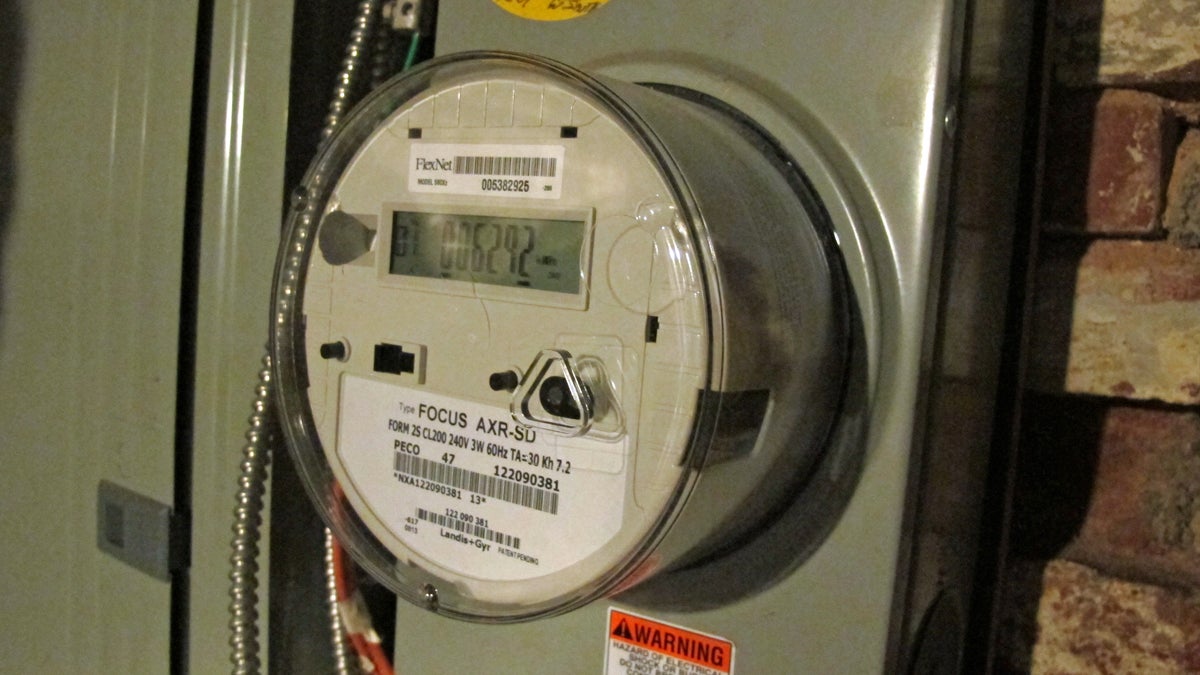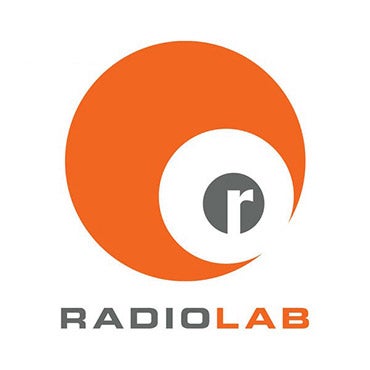Can smart meters really help us get smarter about our energy use?
Listen
Krystal Eason's smart meter is mounted to the basement wall in her North Philadelphia home. The meter gives Eason and her utility more detailed information about her family's energy use. (Katie Colaneri/for The Pulse)
If you live in Philadelphia, you may have noticed a new device on your home called a “smart meter.” Unlike the old meters, they paint a more detailed picture of how and when we’re using energy.
Utilities are encouraging customers to use that information to make themselves smarter about their energy use. But do they make a difference?
State law prompts change
For years, Pennsylvanians just got a bill once a month telling them how much energy they used and how much it cost.
But a 2008 state law is changing that. Act 129 requires the seven largest utilities to install smart meters on every home and business. Customers pay for the meters through a surcharge on their monthly bill and they cannot opt out.
The devices send information back to utilities more frequently, so they get a more accurate read of their customers’ demand on the electric grid.
Smart meters also tell utilities where the power is still out more effectively after storms, which could be a welcome improvement after last year’s brutal winter.
But Pennsylvania wants utilities to go a step further: they have to come up with a plan to share the information these devices collect with their customers.
PECO spokeswoman Cathy Engel Menendez says the meters can help them make smarter choices that will save them energy and money.
“It would suggest to the customer you might want to consider what’s your insulation like?,” she said. “What is the caulking around your windows and doors? When was the last time you replaced your heater?”
The first step is just getting consumers to look.
‘I was wondering what was costing so much’
For Krystal Eason, it should be a no-brainer. She works at The Energy Co-Op, an alternative energy supplier in Philadelphia. It’s her job to get people to understand how much energy they might be wasting.
“I was wondering what was costing so much on our bill and I had assumed it was probably our electric hot water heater, but didn’t know for sure,” said Eason.
Then PECO installed a smart meter in the basement of her North Philadelphia home in February. Eason logged onto a website designed to show her what the meter is measuring.
At first, Eason was fascinated by what it revealed about her family’s energy use.
“You can actually see hour-by-hour what’s happening,” she said, pointing to a line graph on her computer screen showing how much energy her family used last Saturday.
The line starts out flat. Then around 7 a.m., there’s a spike. It doesn’t tell her what was causing her energy use to go up, but she can make a better guess.
“Being able to see this data really confirmed it was every time we were using our hot water was when it was peaking,” she said.
So Eason tried taking shorter showers. But her interest quickly waned.
“I checked it maybe one or two more times to see what was happening and then I completely forgot about it,” she said.
That doesn’t surprise George Loewenstein, a behavioral economist at Carnegie Mellon University.
He compares it to counting calories to loose weight: most of us start out enthusiastically and then we fall off the wagon.
“It is a common pattern that people tend to look at information a lot initially and they stop looking over time,” he said. “People tend to be attuned to things that change, and once something is constant in the environment we generally tend to ignore it.”
Limited participation
KC Boyce is with the nonprofit Smart Grid Consumer Collaborative (SGCC). The group works with utilities to find out how customers are interacting with their smart meters.
Last year, an SGCC survey of 1,000 consumers across the country showed only eight percent of them were using an online tool to look at their energy use. It was up from zero percent the year before.
“What we’ve found is that there’s fairly limited participation right now nationally,” said Boyce. “But at the same time, we’re seeing a really high level of demand that if they’re offered to consumers, about two-thirds of consumers are really interested in taking advantage of these kinds of tools.”
Loewenstein believes one reason many people aren’t monitoring their energy use is because they are overwhelmed by too much information.
“Consumers would really like the devices to be making decisions for them,” he said, the way so-called “smart thermostats” like The Nest, for example, learn users’ schedules to automatically adjust the temperature.
Engel Menendez says the smart meters PECO is installing are not capable of controlling appliances or thermostats.
The very concept of smart meters scares some consumers who worry the devices give their utilities more information than they would care to share, such as when they are sleeping or leave the house, or that their data could be vulnerable to hackers.
The Pennsylvania Public Utility Commission, which is overseeing the rollout of smart meters, says the information is secure. Utilities insist the meters do not give them information about personal habits or appliance use, other than how much energy they use and when.
Looking at the bigger picture
Utilities have until 2023 to install smart meters. Some companies in the western part of the state are just getting started.
Since 2002, customers in PPL territory have been using what the company calls “advanced meters” that share hour-by-hour information about energy use through an online tool. However, a spokesman said those devices are “reaching the end of their useful life” and must be replaced. The PUC has not yet approved the company’s plan to install new “smart meters.”
In Philadelphia, PECO plans to finish installing the devices for all of its 1.6 million customers by the end of this year.
The company is also testing an in-home digital monitor that gives a direct line of sight to how much energy they’re using and what the price of electricity is.
“We always talk to customers about using energy as efficiently as possible,” said Engel Menendez, who is trying out one of these devices in her own home. “If they also knew what the hourly price was, how would they behave?”
Krystal Eason says she is open to the idea if it helps consumers make smarter investments, to the extent they can afford it.
“With energy efficiency… you really need to do big things,” she said. “You need to have your windows sealed and make sure your walls are well-insulated.”
However, she points out there other choices to make.
Aside from her tendency to linger in the shower, there’s another reason Eason’s hot water heater is raising her electric bill: her two young children.
The Eason’s use cloth diapers, which means they’re doing laundry much more often. It also means they’re going to use more electricity.
“That’s kind of the trade-off. We use more water using cloth diapers, but less landfill,” she said. “It was kind of deciding which was the lesser evil.”
WHYY is your source for fact-based, in-depth journalism and information. As a nonprofit organization, we rely on financial support from readers like you. Please give today.



